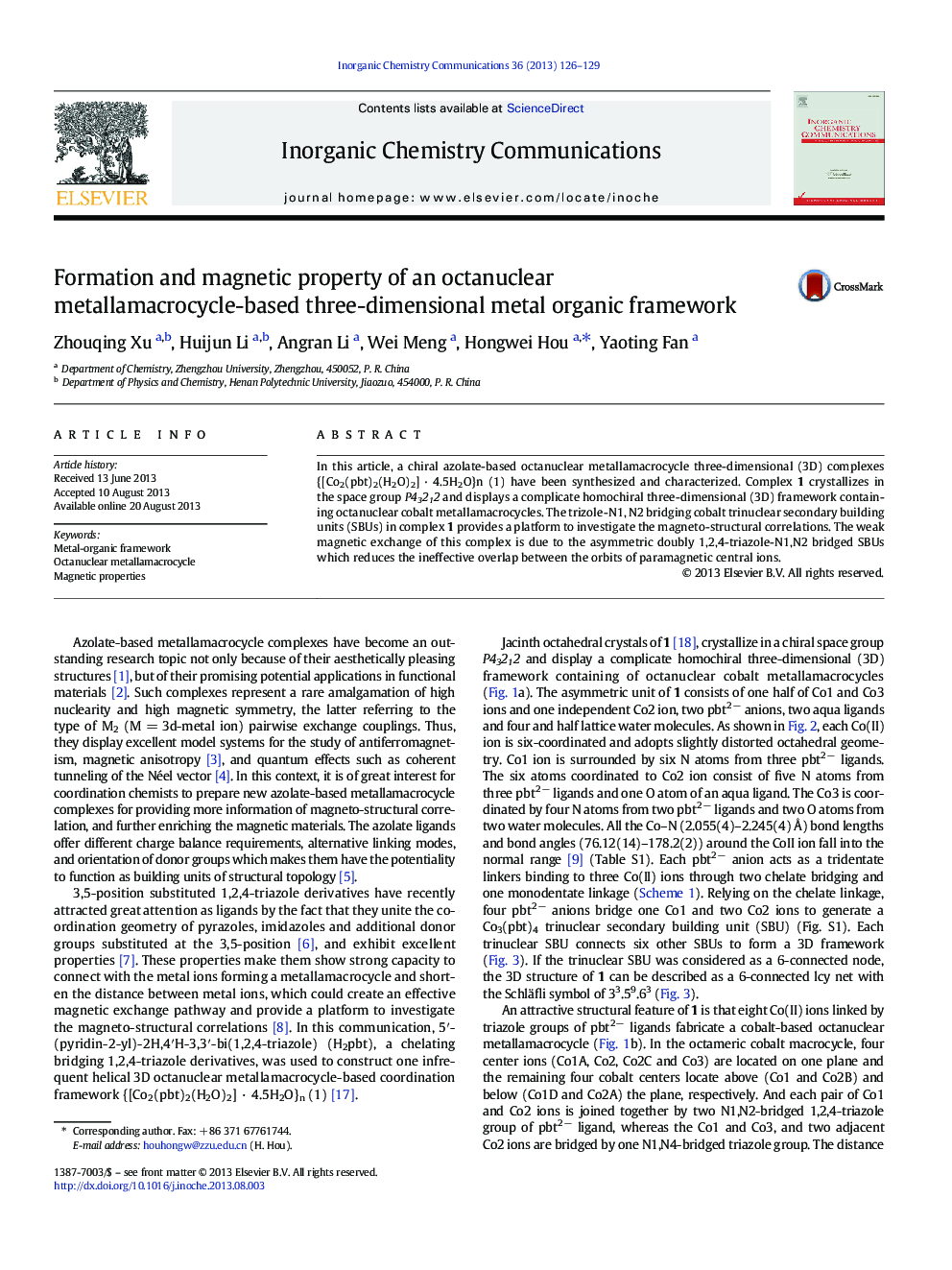| Article ID | Journal | Published Year | Pages | File Type |
|---|---|---|---|---|
| 1301922 | Inorganic Chemistry Communications | 2013 | 4 Pages |
•Three-dimensional complex, {[Co2(pbt)2(H2O)2] · 4.5H2O}n (1), has been synthesized.•Complex 1 exhibits a homochiral network containing octanuclear metallamacrocycles.•1 displays antiferromagnetic couplings through the 1,2,4-triazole-N1,N2 bridges.
In this article, a chiral azolate-based octanuclear metallamacrocycle three-dimensional (3D) complexes {[Co2(pbt)2(H2O)2] · 4.5H2O}n (1) have been synthesized and characterized. Complex 1 crystallizes in the space group P43212 and displays a complicate homochiral three-dimensional (3D) framework containing octanuclear cobalt metallamacrocycles. The trizole-N1, N2 bridging cobalt trinuclear secondary building units (SBUs) in complex 1 provides a platform to investigate the magneto-structural correlations. The weak magnetic exchange of this complex is due to the asymmetric doubly 1,2,4-triazole-N1,N2 bridged SBUs which reduces the ineffective overlap between the orbits of paramagnetic central ions.
Graphical abstractOctanuclear metallamacrocycle-based three-dimensional (3D) complex {[Co2(pbt)2(H2O)2] · 4.5H2O}n (1) containing unidirectional helixes has been synthesized and characterised. Magnetic susceptibility measurements reveal that this complex display antiferromagnetic coupling.Figure optionsDownload full-size imageDownload as PowerPoint slide
